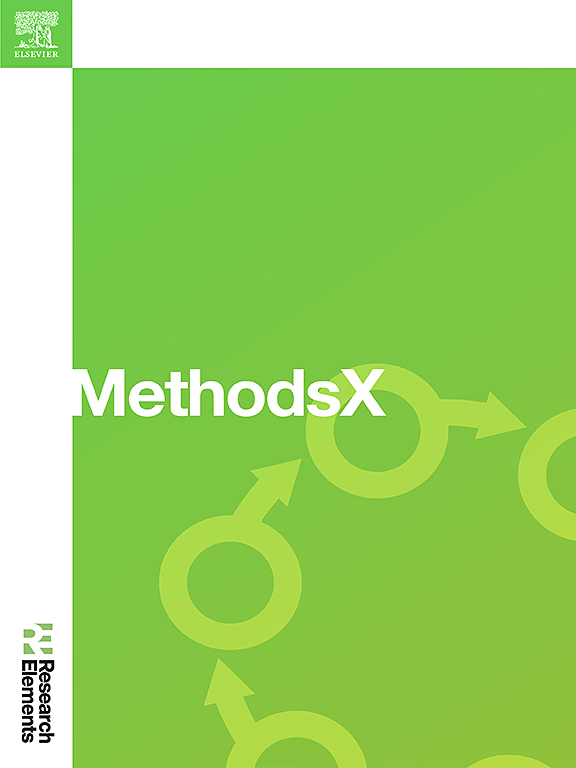Developing an efficient protocol for RNA extraction from Morelet's crocodile caudal scute biopsies
IF 1.6
Q2 MULTIDISCIPLINARY SCIENCES
引用次数: 0
Abstract
Addressing the challenge of RNA extraction from hard tissues of wild animals is crucial, especially given the species' conservation and the ethical imperative to avoid lethal sampling methods. This study focuses on optimizing a protocol for non-invasive RNA extraction from the caudal scutes of Crocodylus moreletii, an endemic species in the Yucatan Peninsula, Mexico, highlighting the significance of conducting research in tropical areas with limited laboratory access. Accompanying with RNA preservation buffer for the scute tissue, we explored various tissue disruption and homogenization techniques to facilitate RNA isolation and purification. The purity and integrity of RNA were assessed to determine the best extraction method. The optimized protocol involved ultrasonication of 75 mg samples, followed by a 3-hour Proteinase K incubation, yielding RNA with concentrations from 18.7 to 154.7 ng/µL, satisfactory purity (260/280 ratio ∼2), and integrity (RNA Integrity Number >5.5). Further validation through quantitative PCR analyses confirmed the suitability of the extracted RNA for studies on gene expression levels and were sufficient for next-generation sequencing (NGS). This protocol may provide a basis for developing similar methodologies for other non-model species with hard tissues.
- •This study optimizes non-invasive RNA extraction from crocodile scutes, enabling conservation research and transcriptomic analysis.

开发一种有效的从莫雷鳄鱼尾鳍组织中提取RNA的方法
解决从野生动物硬组织中提取 RNA 的难题至关重要,特别是考虑到物种保护和避免致命取样方法的道德要求。本研究的重点是优化从墨西哥尤卡坦半岛特有物种鳄鱼(Crocodylus moreletii)尾鳞中非侵入性提取 RNA 的方案,突出强调在实验室条件有限的热带地区开展研究的意义。在使用鳞片组织 RNA 保存缓冲液的同时,我们还探索了各种组织破坏和均质化技术,以促进 RNA 的分离和纯化。我们对 RNA 的纯度和完整性进行了评估,以确定最佳提取方法。优化方案包括对 75 毫克样本进行超声处理,然后进行 3 小时的蛋白酶 K 培养,得到的 RNA 浓度在 18.7 至 154.7 纳克/微升之间,纯度(260/280 比率∼2)和完整性(RNA 完整性编号>5.5)令人满意。通过定量 PCR 分析的进一步验证,确认提取的 RNA 适用于基因表达水平的研究,并足以进行下一代测序(NGS)。这项研究优化了鳄鱼鳞片中 RNA 的非侵入性提取,有助于保护研究和转录组分析。
本文章由计算机程序翻译,如有差异,请以英文原文为准。
求助全文
约1分钟内获得全文
求助全文
来源期刊

MethodsX
Health Professions-Medical Laboratory Technology
CiteScore
3.60
自引率
5.30%
发文量
314
审稿时长
7 weeks
期刊介绍:
 求助内容:
求助内容: 应助结果提醒方式:
应助结果提醒方式:


